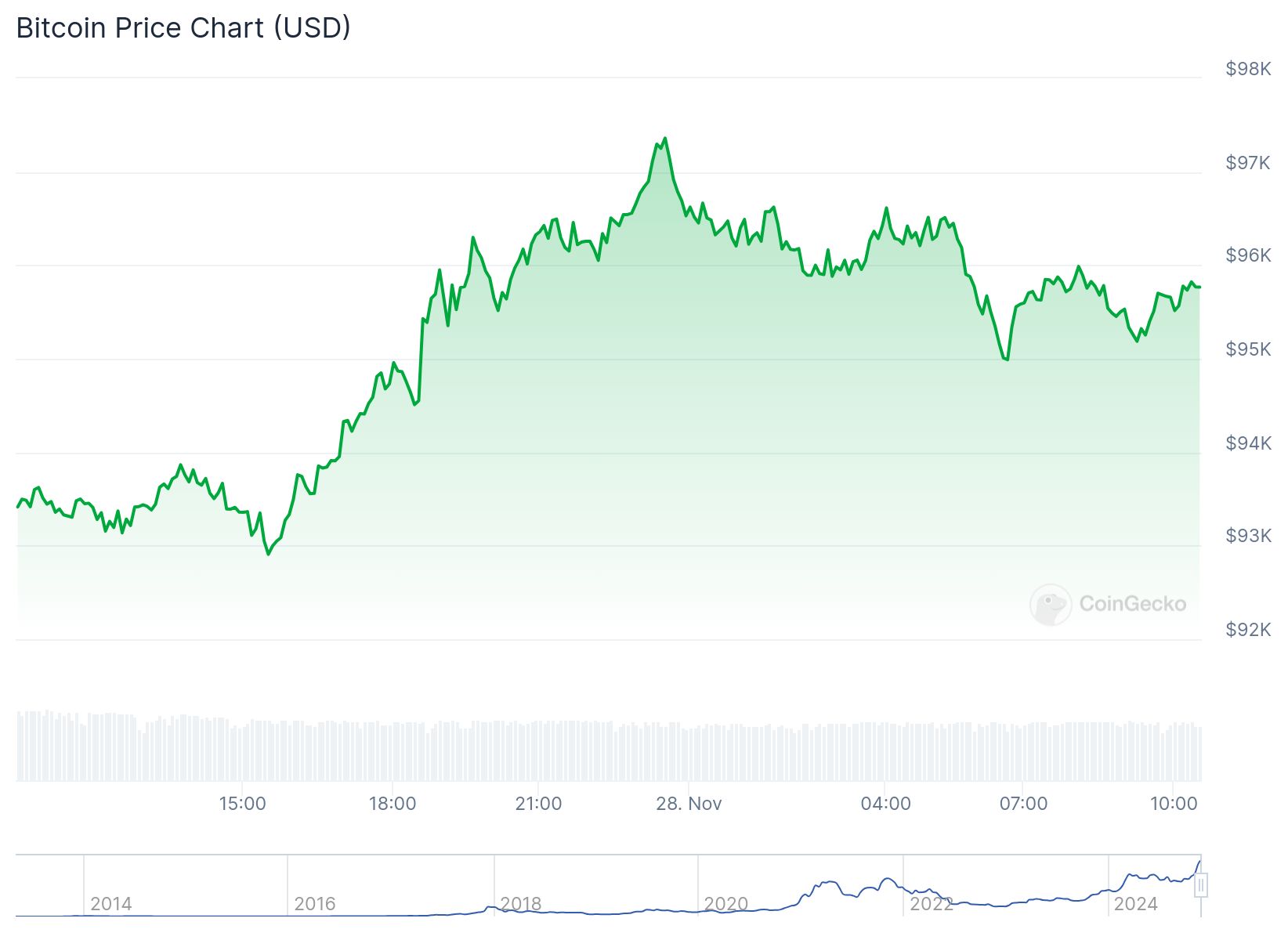Bitcoin is once again making headlines with its potential to reach the $100,000 milestone on November 28. Remarkably, Bitcoin hit previous significant price levels—$1,000 in 2013 and $10,000 in 2017—on the same date. With Bitcoin currently trading at $95,505, a mere 4% increase would push it past this historic threshold.
Simulating Reality?
Superstate CEO Robert Leshner has added an intriguing twist to the narrative. Leshner stated he doesn’t believe in the Simulation Theory, but if Bitcoin hits $100,000 on November 28, he might reconsider. His exact words? “If this happens, I will start believing in Simulation Theory.”
The Simulation Theory was first proposed by Oxford philosopher Nick Bostrom in a 2003 paper. The theory suggests that advanced computational capabilities could create highly realistic simulations, questioning the nature of reality itself. With the rapid advancements in virtual reality (VR) and artificial intelligence (AI), technologies like Apple’s Vision Pro have further blurred the lines between reality and simulation.

The Market Speaks: $100K or Not?
While this theory provides an exciting backdrop, Bitcoin’s potential ascent to six figures remains uncertain. Data from Polymarket shows that investors estimate only a 21% probability of Bitcoin crossing $100,000 in November. However, given Bitcoin’s history of surprises, the possibility cannot be ruled out entirely.
Beyond Speculation
The significance of November 28 for Bitcoin cannot be overstated. Whether driven by coincidence or market cycles, the date has proven pivotal in the past. This year, as Bitcoin edges closer to the $100,000 mark, the implications extend beyond financial markets. If it achieves this milestone, it may also fuel further discussion about the intersection of technology, philosophy, and cryptocurrencies.
Conclusion
Bitcoin’s trajectory toward $100,000 is more than a financial milestone—it’s a moment of cultural and philosophical reflection. As Turkish NY Radio highlights, whether or not Bitcoin achieves this feat on November 28, its place in history as a transformative asset remains undeniable.





























































































![BitTorrent [New]](https://s2.coinmarketcap.com/static/img/coins/64x64/16086.png)
















